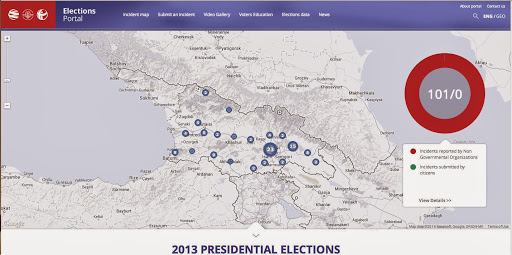Crowdsourcing & Community Mapping for Better Governance

Over the past few years, numerous examples in our everyday life have surfaced on how crowdsourcing & mapping data have helped improve delivery of public services. From, Bostwana Speaks to OpenIDEO, we have all grown to love data on maps and the power of aggregating data from citizens. In fact, we at @NDITech are big fans of mapping and data analysis, which we have leveraged to build a couple of Incredibly Cool Tools (yes, that’s a play on ICT) that we like to brag about...once in a while.
Following my fascination for these approaches, I joined a crowd of equally fascinated civic geeks at an event sponsored by the World Bank on the use of technology to accelerate citizen engagement. The panel moderated by Rob Baker from Ushahidi, included Nithya Raman with Transparent Chennai, Cristiano Ferri Faria from the Brazilian House of Representatives, Mikel Maron with GroundTruth Initiative and Noel Sta Ines at the World Bank.
Each of the panelists had a wide range of experience in mobilizing communities to participate in crowdsourcing and data mapping initiatives and with that experience came a deeper understanding of the value in scaling these initiatives to get governments (regardless of level- local, state or national) to adopt these approaches to improve service delivery. And as everyone in the room nodded in agreement with the value proposition, we got started to learn from the panelists on their secret to success:
1. Engage early, engage often: Being an active member of the Tech4Dem community, you have heard this piece of advice making the rounds in countless talks, numerous events & endless hallways. And the reason it makes an appearance yet again on our blog is that it cannot be emphasized enough. Change is a process and no one ever said it would be instant...or easy. There is real value in consistent engagement with stakeholders, hand-holding them every step of the way as their initial hesitance to adopting new methodologies translates into a full blown tech love affair.
2. What’s in it for me? Governments are accountable to their citizens for taxpayer money spent towards service delivery. Helping governments understand long-term cost savings that would result with the application of these approaches towards policy design, can not only improve their credibility among their constituents, but also elevate their status against opposition.
3. Iterate, iterate, iterate: You got your first crowdsourced project with a visually breathtaking map launched, bravo! Take the afternoon off, as tomorrow morning its time to go back to the drawing board to design the next phase and continue through the iterative cycle of redesigning the solution to bridge the gap between citizens & government. Back to step 1.
Empowering citizens with the use of tools that are easily accessible to them in turn empowers governments that succeed. Get yours to succeed today.
Case studies to get you started:
Interactive Community Mapping: Between Empowerment and Effectiveness
The Role of Crowdsourcing for Better Governance in Fragile State Contexts
